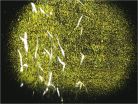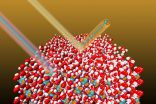(Press-News.org) The National Environment Protection Measures (NEPM) has set maximum daily limits, or 'standards', for six key outdoor pollutants, which QUT's Associate Professor Adrian Barnett says many authorities wrongly assume to be 'safe' thresholds for health.
To test that assumption, Professor Barnett calculated what the health effects would be if the current average levels of five of those pollutants across Melbourne, Sydney and Brisbane were to rise to just below the NEPM 'safe' standards.
"I've found that increasing pollution levels to just below the NEPM standards would cause the deaths of an extra 6000 people each year - 2,600 in both Melbourne and Sydney and 800 in Brisbane," said Professor Barnett, a health statistician with the Institute of Health and Biomedical Innovation.
"The increase would hospitalise a further 20,700 people per year across those cities.
"Study after study has shown there simply is no safe level of air pollution – health problems in the population rise in line with increases in average pollution levels.
"It's understandable that the public could misinterpret the NEPM standards to mean anything below those levels is safe – but it's inexcusable for authorities to use this safe-or-dangerous interpretation.
"I have lost count of the number of government-commissioned environmental reports that have used this fallacy. This practice should have ended years ago."
In a commentary published in the Australian and New Zealand Journal of Public Health, Professor Barnett cited recent environmental reports for the East–West road link in Melbourne and trains carrying coal in Queensland concluding that predicted pollution increases were 'safe' levels.
"Locals concerned about the potential health effects have found it difficult to get past the argument that the increases are below the standards and therefore everything is fine," he said.
"But any new project that increases air pollution will always mean an increase in illness."
Professor Barnett is calling on Australian authorities to instead use thorough cost-benefit analyses of increased pollution levels in future environmental studies.
He said the increased health problems could then be balanced against the economic and societal benefit of the new infrastructure or industry.
"Such cost-benefit analyses are not difficult to do and they will allow policy makers to make better-informed decisions based on the merits and costs of the project," Professor Barnett said.
"Changes also need to be made to the National Environment Protection Measures (NEPM) documentation and web site to prominently state that the standards should not be used to judge whether individual projects are safe or dangerous."
The health statistician has also recommended authorities better communicate the risks of air pollution to the public, including stating the estimated health impacts of existing pollution level categories.
"For example, the Victorian Environmental Protection Agency (EPA) gives hourly updates on air quality for 16 sites across the state," Professor Barnett said.
"This was clear during the recent fire at Morwell where the particulate matter numbers peaked at over 550 µg/m3.
"To help interpret the numbers, the Victorian EPA has categorised and colour-coded the results into five categories from "very good" to "very poor".
"However, these categories still do not have enough meaning for lay people, particularly when people want to know if they should change their behaviour in order to reduce their exposure."
Professor Barnett's analysis of death rates in Morwell following the 45-day Hazelwood coal fire revealed the resulting pollution caused an estimated 15 per cent increase in the local death rate, which translates to 11 to 14 premature deaths.
The World Health Organization has estimated outdoor air pollution causes 3.7 million deaths every year, 3000 of those in Australia.
A copy of the commentary is attached to this emailed media release. It can also be accessed via the Australian and New Zealand Journal of Public Health website from 1 October.
INFORMATION:
Images of Professor Barnett and tables of data are available on Flickr.
Media contacts:
Rose Trapnell, QUT Media team leader, 07 3138 2361, 0407 585 901, rose.trapnell@qut.edu.au.
Journal link: http://onlinelibrary.wiley.com/journal/10.1111/(ISSN)1753-6405
Flickr link: https://www.flickr.com/photos/104605572@N02/sets/72157647588658297/
Expect 6,000 more Australian deaths if pollution rises to 'safe' threshold
A leading pollution expert is warning Australian governments not to use the existing national pollution standards when assessing new infrastructure projects
2014-09-30
ELSE PRESS RELEASES FROM THIS DATE:
How to predict who will suffer the most from stress
2014-09-30
Montreal, September 30, 2014 — More than 23 per cent of Canadians report being stressed or very stressed on most days. While chronic stress increases the risk of poor mental and physical health, not everyone is affected the same way. Some cope well, but for others — especially those most likely to sweat the small stuff — chronic stress can be harmful.
Thankfully, new research from Concordia University has found a way to identify those most susceptible to stress. That's a huge help for healthcare professionals working to stop stress before it gets out of control.
The ...
Antioxidant found in grapes uncorks new targets for acne treatment
2014-09-30
Got grapes? UCLA researchers have demonstrated how resveratrol, an antioxidant derived from grapes and found in wine, works to inhibit growth of the bacteria that causes acne.
The team also found that combining resveratrol with a common acne medication, benzoyl peroxide, may enhance the drug's ability to kill the bacteria and could translate into new treatments.
Published in the current online edition of the journal Dermatology and Therapy, the early lab findings demonstrated that resveratrol and benzoyl peroxide attack the acne bacteria, called Propionibacterium acnes, ...
New hypothyroidism treatment guidelines from American Thyroid Association
2014-09-30
New Rochelle, NY, September 30, 2014—Levothyroxine (L-T4), long the standard of care for treating hypothyroidism, is effective in most patients, but some individuals do not regain optimal health on L-T4 monotherapy. New knowledge about thyroid physiology may help to explain these differences. An expert task force of the American Thyroid Association on thyroid hormone replacement reviewed the latest studies on L-T4 therapy and on alternative treatments to determine whether a change to the current standard of care is appropriate, and they present their recommendations in ...
High-speed drug screen
2014-09-30
CAMBRIDGE, MA -- MIT engineers have devised a way to rapidly test hundreds of different drug-delivery vehicles in living animals, making it easier to discover promising new ways to deliver a class of drugs called biologics, which includes antibodies, peptides, RNA, and DNA, to human patients.
In a study appearing in the journal Integrative Biology, the researchers used this technology to identify materials that can efficiently deliver RNA to zebrafish and also to rodents. This type of high-speed screen could help overcome one of the major bottlenecks in developing disease ...
US military making progress reducing stigma tied to seeking help for mental illness
2014-09-30
The U.S. Department of Defense has made progress in reducing the stigma associated with seeking help for mental illnesses such as depression and post-traumatic stress disorder, but more improvement is still needed, according to a new RAND Corporation study.
Despite efforts of both the Defense Department and the Veterans Health Administration to enhance mental health services, many service members still do not seek needed care for mental health problems. Defense officials have made a concerted effort to promote treatment as a way to reduce stigma, according to the study. ...
Laser-guided sea monkeys show how zooplankton migrations may affect global ocean currents
2014-09-30
WASHINGTON, D.C., September 30, 2014--Sea monkeys have captured the popular attention of both children and aquarium hobbyists because of their easily observable life cycle -- sold as dehydrated eggs, these tiny brine shrimp readily hatch, develop and mate given little more than a tank of salt water.
Physicists, though, are interested in a shorter-term pattern: Like other zooplankton, brine shrimp vertically migrate in large groups in response to changing light conditions, coming closer to the surface at night and retreating deeper during the day.
Two researchers at ...
Taking thin films to the extreme
2014-09-30
WASHINGTON D.C., September 30, 2014 – Applying a well-known optical phenomenon called thin-film interference, a group of researchers at Harvard University has demonstrated the ability to "paint" ultra-thin coatings onto a rough surface -- work that holds promise for making future, flexible electronic devices, creating advanced solar cells and detailing the sides of next-gen rocket ships and spacecraft with extremely lightweight decorative logos.
When light passes through oil in water, it becomes iridescent, revealing a myriad of colors that glisten and shift along with ...
Unexpected new mechanism reveals how molecules become trapped in ice
2014-09-30
WASHINGTON D.C., Sept. 30, 2014 – Ice is ubiquitous in nature—found within terrestrial and astrophysical environments alike—and contains many atoms and molecules trapped inside it. For example, ice beneath the world's oceans hosts a vast reservoir of greenhouse gases, which if released would have a profound effect on climate change.
On the earth's surface, seasonal ice and permafrost-covered regions represent a vast reservoir for the collection, concentration and release of environmental and trace gases—encompassing national security concerns about the persistence and ...
Breakthrough study discovers 6 changing faces of 'global killer' bacteria
2014-09-30
Every ten seconds a human being dies from pneumococcus infection making it the leading cause of serious illness across the globe
Research discovers six unique states of pneumococcus
Knowledge of these six characteristics can help in development of tailored vaccines
Every ten seconds a human being dies from Streptococcus pneumoniae infection, also known as pneumococcus, making it a leading global killer.
An interdisciplinary team of researchers from the University of Leicester in collaboration with international experts have unlocked a genetic switch controlling ...
Americans undergo colonoscopies too often, study finds
2014-09-30
Colonoscopies are a very valuable procedure by which to screen for the presence of colorectal cancer. However, it seems that healthy Americans who do undergo this sometimes uncomfortable examination often have repeat screenings long before they actually should. Gina Kruse of Massachusetts General Hospital in the US and colleagues advise that endoscopists stick to the national guidelines more closely. Their findings appear in the Journal of General Internal Medicine, published by Springer.
Current national guidelines strongly recommend that adults aged 50 and older should ...
LAST 30 PRESS RELEASES:
Empty-handed neurons might cause neurodegenerative diseases
Black women hospitalised in USA with blood infection resistant to last-resort antibiotic at increased risk of death
NEC Society Statement on the Watson vs. Mead Johnson Verdict
Lemur’s lament: When one vulnerable species stalks another
Surf clams off the coast of Virginia reappear – and rebound
Studying optimization for neuromorphic imaging and digital twins
ORNL researchers win Best Paper award for nickel-based alloy tailoring
New beta-decay measurements in mirror nuclei pin down the weak nuclear force
Study uncovers neural mechanisms underlying foraging behavior in freely moving animals
Gene therapy is halting cancer. Can it work against brain tumors?
New copper-catalyzed C-H activation strategy from Scripps Research
New compound from blessed thistle promotes functional nerve regeneration
Auburn’s McCrary Institute, ORNL to partner on first regional cybersecurity center to protect the nation’s electricity grid
New UNC-Chapel Hill study examines the increased adoption of they/them pronouns
Groundbreaking study reveals potential diagnostic marker for multiple sclerosis years before symptom onset
Annals of Internal Medicine presents breaking scientific news at ACP’s Internal Medicine Meeting 2024
Scientists discover new way to extract cosmological information from galaxy surveys
Shoe technology reduces risk of diabetic foot ulcers
URI-led team finds direct evidence of ‘itinerant breeding’ in East Coast shorebird species
Wayne State researcher aims to improve coding peer review practices
Researchers develop a new way to safely boost immune cells to fight cancer
Compact quantum light processing
Toxic chemicals from microplastics can be absorbed through skin
New research defines specific genomic changes associated with the transmissibility of the monkeypox virus
Registration of biological pest control products exceeds that of agrochemicals in Brazil
How reflecting on gratitude received from family can make you a better leader
Wearable technology assesses surgeons’ posture during surgery
AATS and CRF® partner on New York Valves: The structural heart summit
Postpartum breast cancer and survival in women with germline BRCA pathogenic variants
Self-administered acupressure for probable knee osteoarthritis in middle-aged and older adults
[Press-News.org] Expect 6,000 more Australian deaths if pollution rises to 'safe' thresholdA leading pollution expert is warning Australian governments not to use the existing national pollution standards when assessing new infrastructure projects




